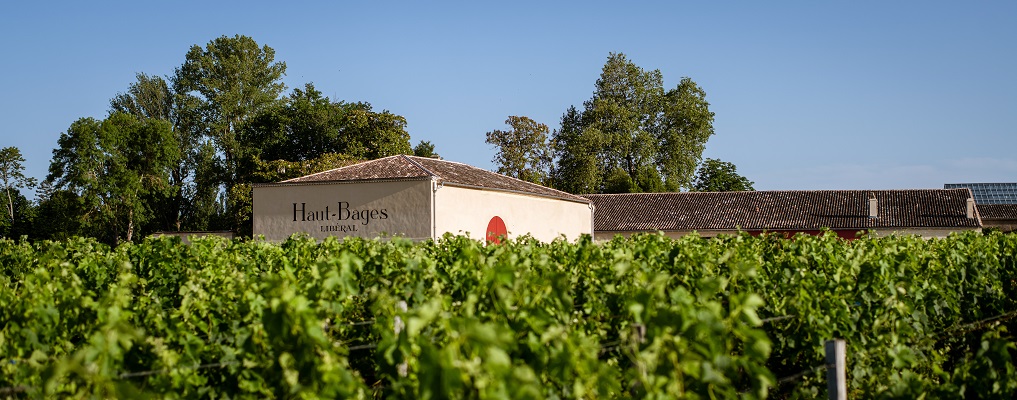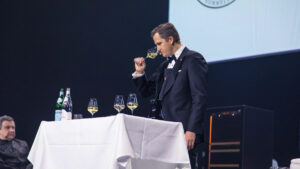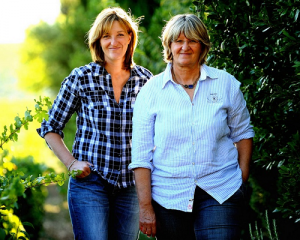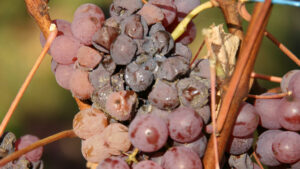
One of the few biodynamic cru classé 1855, the history of Haut-Bages Libéral is fascinating, and its winegrowing vision is quite original in Bordeaux. The Château is ahead of its neighbours regarding the agronomic research and the organic/biodynamic technics to stimulate soils’ life.
Fifth Grand Cru Classé 1855, the Château Haut-Bages Libéral, located in Pauillac, is now owned by Claire Villars-Lurton, Gonzage Lurton’s wife (owner of Château Dufort-Vivens), who took over her mother Bernadette. The name of the domain come from the Libéral family who owned the Château in the beginning of the 18th century and gathered the best terroirs of the south of Pauillac.
After the Libéral family, owners came one after another, without really standing out, often favouring other properties. For instance, the Merlaut family had more interest in Chasse-Spleen. Claire Villars-Lurton, third generation of the Merlaut family, decided to wake up this sleeping beauty by investing heavily in the property: new chai but most importantly a new winegrowing direction towards an organic and biodynamic production.
An organic/ biodynamic vineyard, aiming to stimulate the soils’ life.
This 30-hectares vineyard is divided in 3 lieux-dits, next to Château Latour, Pichon Baron de Longueville and Château Grand-Puy Lacoste. The subsoils are divided in two parts: one of gravelly soils and the other of limestone and chalk, both giving to the wine a beautiful minerality. The river proximity moderates the temperature differences and, for instance, limits the frost episodes. Cabernet Sauvignon represents 70% of the vines and Merlot, 30%.
Some parcels have organic and even biodynamic certifications since 2007 but the domain obtain the full organic certification in 2019 and the biodynamic one in 2021. This strong choice was made by Claire Villars-Lurton, doctor in physics, who studied chemistry on top of her oenological studies. She realized soon the impact of noxious products in winegrowing. Anne-Claude Leflaive’s wines and their beautiful ageing comforting her intuitions in her beginnings.
Only organic and biodynamic treatments are used. Many different plants extracts are employed; for instance adding some oak barks in the vines improves the wine tannins.
The role of herbaceous cover
The Château is proud to be ahead of its neighbours about many herbaceous cover subjects. As Claire explained to the iDealwine team, if you want to grow organic wines on a limestone and chalk soil, having an herbaceous cover is a necessity; otherwise, tractors would sink. They started to sow turf and cereals, and for two years, they are diversifying the species with poaceous, leguminous … They choose the species depending on the soils needs. For example, when soils are too compact, they would use mustard, clover or leguminous.
Having an herbaceous cover has another advantage: preserving the vines against the mildew, by making the soil more permeable. Water can infiltrate better and does not stagnate on the surface. It limits frost for the same reason.
The property observes some real improvements thanks to this herbaceous cover. As Claire says “At the beginning, the organic conversion decreases yield because of diseases but also because the soils need time to create life again. We had small yields from 2006 to 2012. However, since 2015, we have some of the best yields of the appellation.”
The agroforestry was set largely in this domain. The Château teams are ahead on the research about conducting long-term winegrowing methods. They work with many specialists to go further and share their good practices with other vineyards.
Winemaking methods should improve the wines digestibility
The chais were renovated in 2001 and 2017 by the famous Bordeaux architect, Fabien Pédelaborde. It counts 16 stainless steel vats, 16 thermoregulated concrete vats but also amphoras and egg-shaped vats. Wines are vinified by parcel. Yeasts are analysed before being used in the different vats. This choice is made to avoid any default (brett). Wines are fermented under low temperature, and then aged in 40% of new oak, 40% one-year barriques and 20% amphoras or egg-shaped vats.
All this winemaking process is orchestrated with a lot of care and precision. Many analyses are conducted during the process to ensure they produce the best wine possible each year.
The wines of Château Haut-Bages Libéral
Claire Villars-Lurton explains that she wants “to produce wines we want to drink, with a real drinkability, smooth tannins, a real energy. I want to make wines you can drink young but that you can also age a long time in your cellar. Of course, after 10 years, wines are way more complex, but they need to be enjoyable from the beginning. I want my wines to be lightful and fruitful. This feature was once forgotten in Bordeaux: the grape taste. Therefore, we need to go back to manual moderated extractions. Technic is a mean not a result.”
One thing for sure, the wines of Château Haut-Bages Liberal are among our Bordeaux favorites. Wines we love to taste, even during primeurs.
See all the wines from Château Haut-Bages Libéral here



